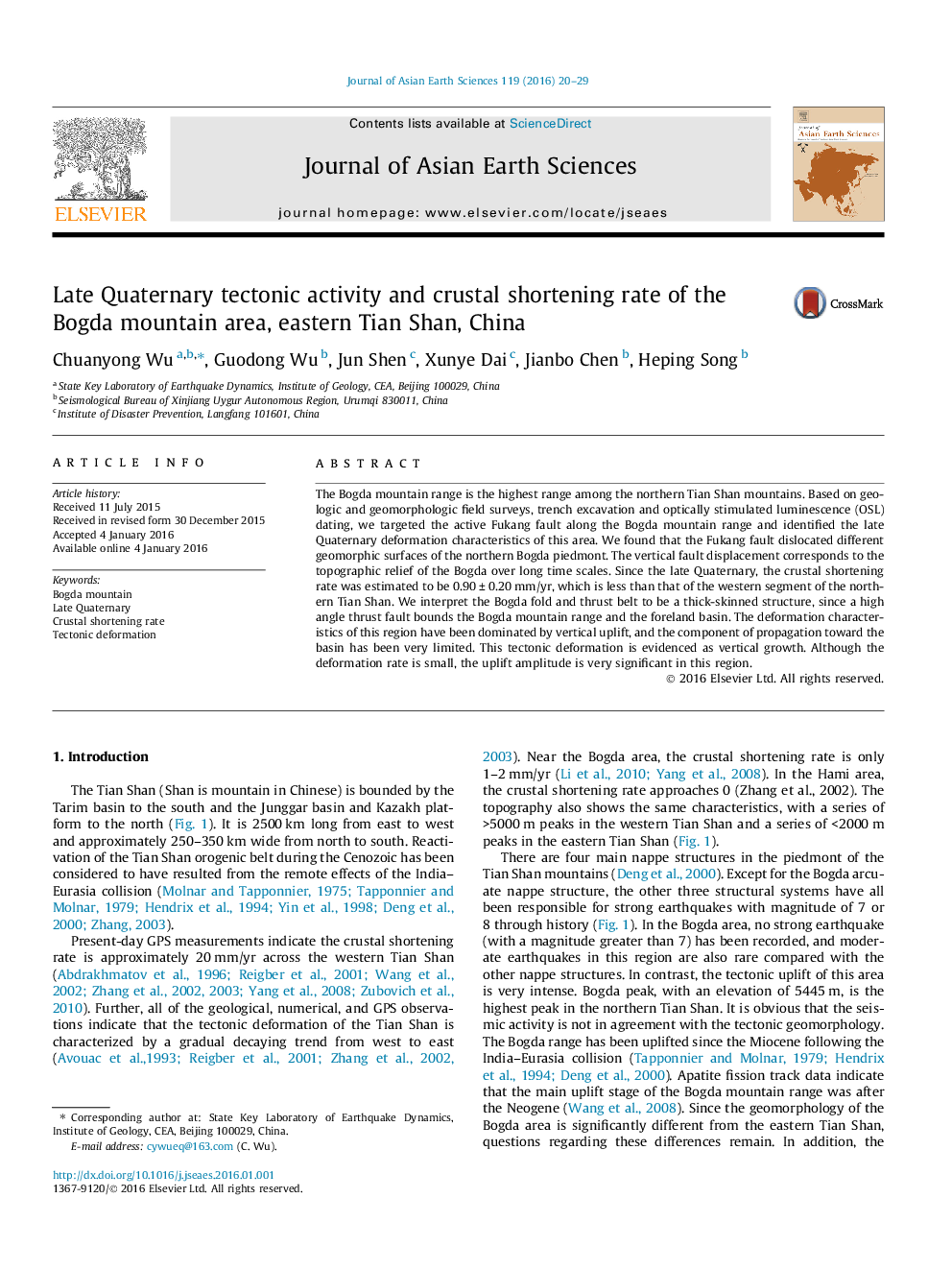| Article ID | Journal | Published Year | Pages | File Type |
|---|---|---|---|---|
| 4730097 | Journal of Asian Earth Sciences | 2016 | 10 Pages |
•The crustal shortening rate of the Fukang fault is 0.90 ± 0.20 mm/yr.•The geomorphic surfaces in the Bogda northern piedmont area are divided.•The Bogda mountain is a thick–skinned nappe whose deformation characteristic is dominated by vertical uplift.
The Bogda mountain range is the highest range among the northern Tian Shan mountains. Based on geologic and geomorphologic field surveys, trench excavation and optically stimulated luminescence (OSL) dating, we targeted the active Fukang fault along the Bogda mountain range and identified the late Quaternary deformation characteristics of this area. We found that the Fukang fault dislocated different geomorphic surfaces of the northern Bogda piedmont. The vertical fault displacement corresponds to the topographic relief of the Bogda over long time scales. Since the late Quaternary, the crustal shortening rate was estimated to be 0.90 ± 0.20 mm/yr, which is less than that of the western segment of the northern Tian Shan. We interpret the Bogda fold and thrust belt to be a thick-skinned structure, since a high angle thrust fault bounds the Bogda mountain range and the foreland basin. The deformation characteristics of this region have been dominated by vertical uplift, and the component of propagation toward the basin has been very limited. This tectonic deformation is evidenced as vertical growth. Although the deformation rate is small, the uplift amplitude is very significant in this region.
